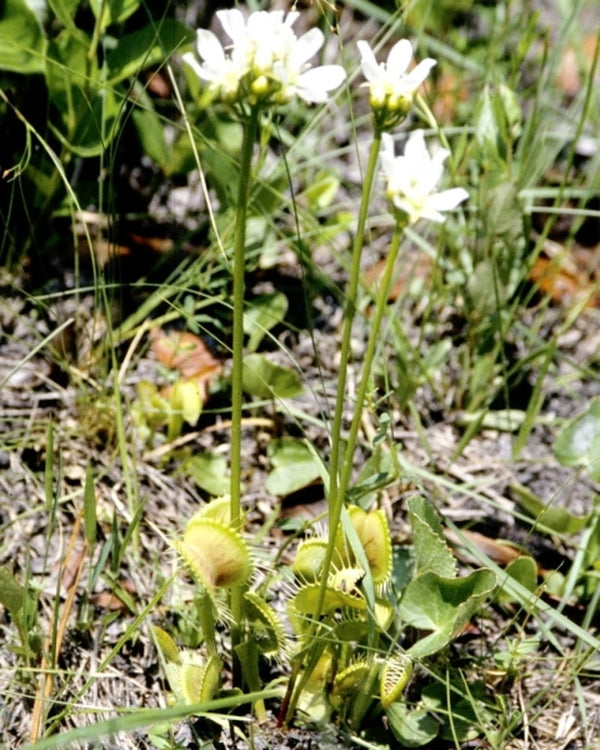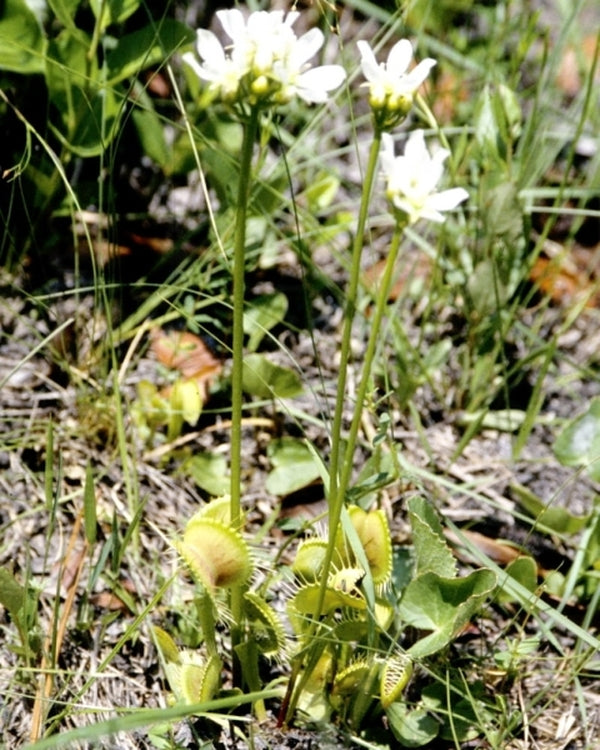Dionaea muscipula
Venus Fly Trap
This plant is not currently for sale. This is an archive page preserved for informational use.
Shop Available DionaeaItem #: 1272
Zones: 5a to 9b
Dormancy: Winter
Height: 4" tall
Origin: United States
Pot Size: 3.5" pot (24 fl. oz/0.7 L)
Dionaea muscipula, known worldwide as Venus Fly Trap, is a rare endemic to a small area on the Southeast coast of NC/SC, within 2 hours of PDN/JLBG. We are pleased to be able to offer artificially propagated (tissue culture) plants of this amazing US native plant (Actually, we think it was brought here by extraterrestrial aliens, but scientists don't yet concur). This semi-evergreen carnivorous perennial makes a small rosette to 2" tall x 12" wide, great for a bog or very wet site. The trigger-happy Venus fly traps form on the ends of the leaves throughout the growing season...stalks of white flowers are also produced in the summer. Do not artificially feed the traps, as overfeeding kills the plants...feeding them unruly small kids is okay!
Maintenance:
In the ground, Venus fly traps are maintenance free as long as the growing area is prepared correctly.
Growing Conditions:
In the wild, Venus fly traps grow in sandy, acidic soils with very low nutrition levels. Because Dionaea muscipula is so exacting in its requirements, you should come as close as possible to duplicating these conditions. A soil mix of 50% sand/50% peat or 100% peat will work well. The soils should stay moist at the roots, but not saturated long term at the base.
Venus fly traps require full to part sun, but are not tolerant of shade. If you grow your traps in a container, they must have cold temperatures during the winter to survive. In other words, Venus fly traps are not a good house plant under the temperature regimens that normal people enjoy. An ideal winter temperature for potted plants is 32-35F at night. Keep in mind, however, that potted plants will most likely not survive winter temperatures below 15 degrees F, although this temperature is well tolerated by plants in the ground.

-
Other Attributes
Genus: Dionaea
Other: Plants Named After Animals , United States Native Plants

